可恢复功能剪力墙结构研究进展
2016-01-07蒋欢军,刘其舟
第一作者蒋欢军男,博士,教授,1973年生
可恢复功能剪力墙结构研究进展
蒋欢军,刘其舟
(同济大学土木工程防灾国家重点实验室,上海200092)
摘要:近年来,可恢复功能结构逐渐成为了抗震工程研究的热点。可恢复功能剪力墙,主要包括:配合框架结构同时使用的摇摆或自复位剪力墙,通过摇摆减轻地震作用的破坏,通过自重或施加预应力使结构复位;应用于剪力墙结构中的可更换剪力墙,通过对破坏部位的更换实现结构功能的快速恢复。介绍了自复位剪力墙结构,摇摆剪力墙结构及可更换剪力墙结构的相关研究进展,对研究领域的成果和不足进行了总结,并指出研究领域中存在的空白。
关键词:可恢复功能结构;摇摆剪力墙;自复位剪力墙;可更换剪力墙
基金项目:“十二五”国家科技支撑计划(2012BAJ13B02)
收稿日期:2013-12-19修改稿收到日期:2014-04-10
中图分类号:TU352.1
文献标志码:A
DOI:10.13465/j.cnki.jvs.2015.07.008
Abstract:In recent years, earthquake resilient structure has become a research hotspot of the seismic engineering. The earthquake resilient shear walls include the rocking or self-centering shear wall cooperated with frame structure and the replaceable shear wall. The former reduces the seismic destruction effect through rocking and restores to its the original position through self-weight or prestressing forces. The other restores the building through rapidly replacing damaged parts. An overview was presented regarding the development history of self-centering shear walls,rocking shear walls and replaceable shear walls, then the achievements and shortcomings in the field of research were summarized, and the blank areas in the field were pointed out.
State-of-the-art of the research advances on resilient shear walls
JIANGHuan-jun,LIUQi-zhou(State Key Laboratory for Bisaster Keduotion in Civil Engineering, Tongji University, Shanghai 200092,China)
Key words:earthquake resilient structure; rocking shear wall; self-centering shear wall; replaceable shear wall
从20世纪90年代开始,基于性能的抗震[1-3]设计逐渐成为了抗震研究的主流方向之一。基于性能的抗震设计要求建筑在可能发生的地震作用下具有预期的抗震性能和安全度。由于地震的不确定性和复杂性,建筑物往往遭受超越设防烈度的地震作用,导致难以修复,严重影响了人们的正常生活,同时,修复带来的漫长的停工期及修复的大量花费造成了社会巨大的经济损失。因此,抗震性能目标逐渐由保障生命安全向恢复生产建筑的使用功能和居民的正常生活方面倾斜。2009年1月,美日学者在NEES/E-Defense美日工程第二阶段合作研究会议上,首次提出将“可恢复功能城市”(resilient city)作为地震工程合作的大方向[4]。标志着可恢复功能结构成为抗震研究的主流方向之一。
目前,应用于可恢复功能结构中的剪力墙大多采取摇摆和自复位结构形式,主要配合框架结构使用。通过结构的摇摆,减轻地震对结构的作用,同时在结构相对速度或相对位移较大的部位增设耗能部件,在摇摆的过程中大量消耗地震能量,保护结构免遭破坏,从而实现结构震后不破坏或破坏较轻,易于修复的性能目标。相比框架结构,纯剪力墙结构需要足够的抗侧刚度,以限制结构的层间位移。我国《高层建筑混凝土结构技术规程》[5]要求,剪力墙结构弹性及弹塑性层间位移角限值分别为1/1 000和1/120,远小于框架结构的1/550和1/50。摇摆或自复位剪力墙层间位移量较大,无法满足这一要求。因此,应用于纯剪力墙结构的可恢复功能剪力墙主要采取可更换的形式,通过在剪力墙墙脚等易破坏的区域设置易拆卸可更换构件,震后对可更换构件进行更换从而快速恢复剪力墙的抗震功能。
本文分别详细介绍了自复位剪力墙结构,摇摆剪力墙结构及可更换剪力墙结构的相关研究进展,对研究领域的成果和不足进行了总结,并指出研究领域中存在的空白。
1自复位剪力墙结构
1.1国外对于自复位剪力墙结构的相关研究
Kurama等[6-7]提出了无粘结预应力自复位剪力墙并对其进行了初步分析和评估,Kurama等[8]又对这种剪力墙进行了系统研究。无粘结预应力自复位剪力墙由混凝土墙片通过水平节点叠合而成,墙片内置无粘结预应力钢绞线。墙片与墙片之间,墙片与基础之间均没有固定连接。在地震力下,通过墙片与墙片之间,墙片与基础之间缝隙张开闭合的效果,有效地减小了地震对结构的作用。结构的自重及预应力则提供自复位力将缝隙闭合。Kurama采用纤维模型对试验进行了数值模拟,结果表明,剪力墙在规范指定的地震动下破坏和残余变形均很小,但结构也存在着侧向位移过大的缺点。为了克服这一缺点,Kurama等[9]提出在结构中附加粘滞阻尼器来提高结构的非弹性耗能能力(图1),结构通过裂缝张开时阻尼器变形来消耗地震能量(图2)。研究人员提出了这种结构系统的设计方法,并对剪力墙进行了非线性时程分析,结果表明,附加粘滞阻尼器能有效减小结构侧向位移。Kurama等[10]通过非线性时程分析对后张拉预制混凝土剪力墙的抗震性能进行了评估。Restrepo等[11]在预制预应力自复位剪力墙墙肢与基础连接处增设了软钢棒消能装置,并通过试验与相同尺寸的传统现浇混凝土剪力墙的抗震性能进行了对比。基于Kurama提出的无粘结后张预应力预制剪力墙,Perez等[12-13]也进行了试验及相关分析。Restrepo等[14-16]又对加设软钢消能装置的无粘结预应力自复位剪力墙结构进行了理论和试验分析,提出了较为详细的设计公式和方法(图3)。一系列试验结果表明,增设了软钢棒耗能装置的自复位剪力墙剪力墙能有效耗散地震能量,滞回曲线呈旗帜型,结构几乎没有残余变形和明显破坏。
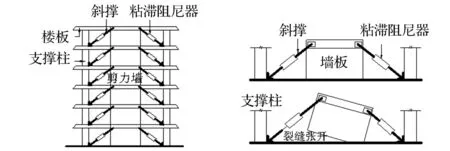

图1 带粘滞阻尼器的自复位剪力墙结构[9]Fig.1Self-centeringshearwallwithviscousdampers[9]图2 缝隙张开时的阻尼器变形[9]Fig.2Damperdeformationduetogapopening[9]
Sritharan等[17]设计了一种带竖向接缝自复位剪力墙结构(图4),结构由单片墙片通过U型弯曲钢板连接而成(图5),通过摇摆过程中U型钢板塑性变形消耗地震能量,通过与试验结果进行对比验证,作者提出了简化的带竖向接缝自复位剪力墙结构分析和设计方法。
Marriott[18]提出可以将预应力自复位剪力墙的耗能装置设计成外置的形式,以方便震后更换(图6),研究人员制作了4片剪力墙试件进行振动台试验,其中三片墙有不同种类的耗能装置,而第四片墙仅靠接触阻尼和内部摩擦耗能。试验结果表明,安装外置耗能装置的剪力墙具有良好的耗能及自复位能力,破坏主要集中在外置的耗能装置上,通过更换耗能装置可以快速恢复剪力墙的抗震功能。


图3 带软钢阻尼器的自复位剪力墙结构[15]Fig.3Self-centeringshearwallwithmildsteeldampers[15]图4 带接缝自复位剪力墙结构[17]Fig.4Jointedself-centeringshearwall[17]
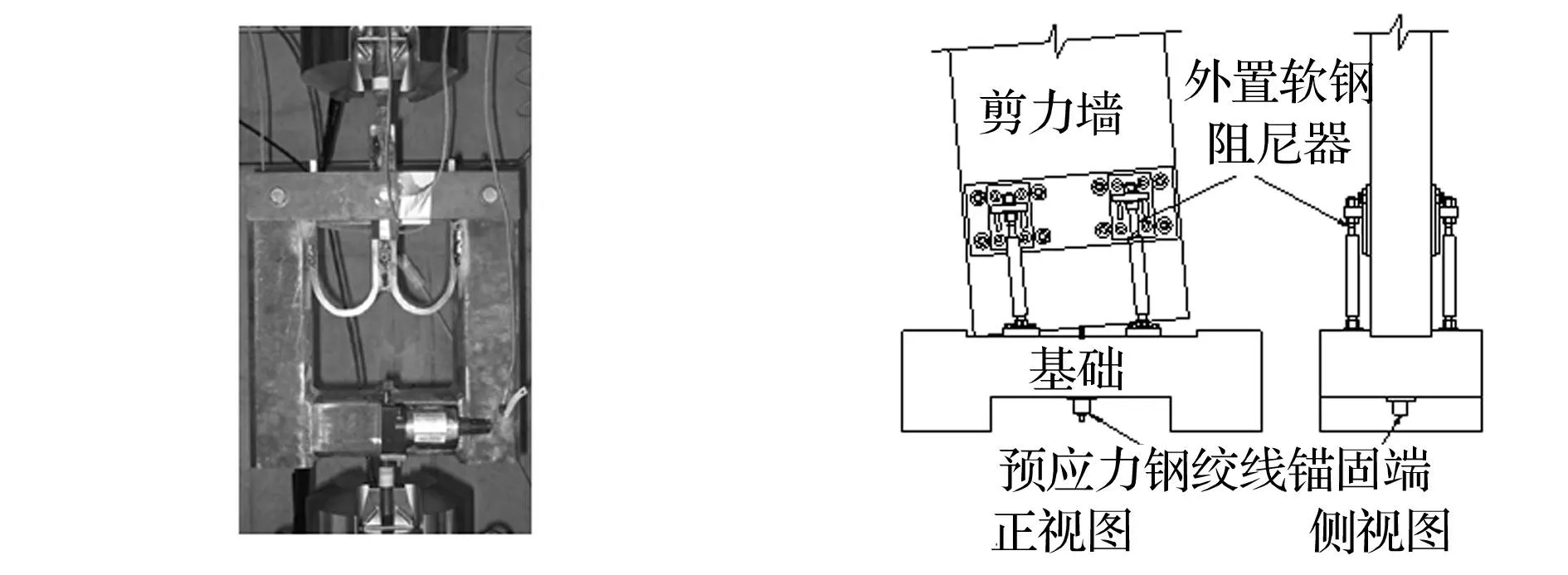

图5 U型弯曲钢板连接器试件[17]Fig.5SpecimenofU-shapedbendingplateconnector[17]图6 带外置耗能装置的自复位剪力墙结构[18]Fig.6Self-centeringshearwallwithexternalenergydissipationdevice[18]
Panian等[19-20]指出,施加预应力的剪力墙具有更好的经济效益及抗震效果。Panian等[21]将预应力自复位剪力墙应用于新建工程,研究人员在位于Berkeley的David Brower Center结构中部设置C形预应力墙体,墙体在强震中纵筋屈服,端部可以抬起(图7-8)。研究人员利用CSI Perform-3D对结构进行了非线性时程分析,分析结果表明,采用预应力自复位剪力墙能够增加结构延性,减小软钢用量和结构残余变形。
Clayton等[22]提出了自复位钢板剪力墙的设计规程并对其抗震性能进行了评估。Winkley等[23]对自复位钢板剪力墙进行了系列试验,Clayton等[24-25]对Winkley的试验进行了总结并提出了适用于新型结构的设计方法(图9)。这种自复位钢板剪力墙通过在钢梁柱中安装薄钢板来提供结构的强度和刚度,并通过钢板的屈服消耗地震能量。梁柱之间可以相互脱开,通过预应力钢绞线来提供自复位能力(图10)。钢绞线设计为在地震中不会破坏,薄钢板则设计为易于更换。试验结果及性能评估表明,结构具有较高的延性和刚度,并表现出良好的自复位及耗能能力。


图7 抗侧结构[21]Fig.7Lateralresistingstructure[21]图8 预应力钢绞线分布[21]Fig.8Distributionofprestressedsteelstrand[21]


图9 自复位钢板剪力墙试件[24]Fig.9Specimenofself-centeringsteelplateshearwalls[24]图10 自复位钢板剪力墙节点构造[24]Fig.10Thenodestructureofself-centeringsteelplateshearwalls[24]
Wight等[26-27]通过振动台试验对混凝土砌块自复位开洞剪力墙进行了研究,以验证当地住宅剪力墙的抗震性能。研究人员先对两片单层平面剪力墙进行了试验(图11),以研究门窗开洞对剪力墙的影响,之后又对一片简单的矩形剪力墙进行了试验(图12),以研究多重门窗开洞和墙转角对剪力墙的影响。所有的墙片均通过高强钢绞线施加预应力,墙片可以与基础脱开进行摇摆。试验结果表明,墙片的残余变形很小,砌体压溃主要发生在墙底部转角,垂直裂缝则主要出现在门窗开口处及过梁上。
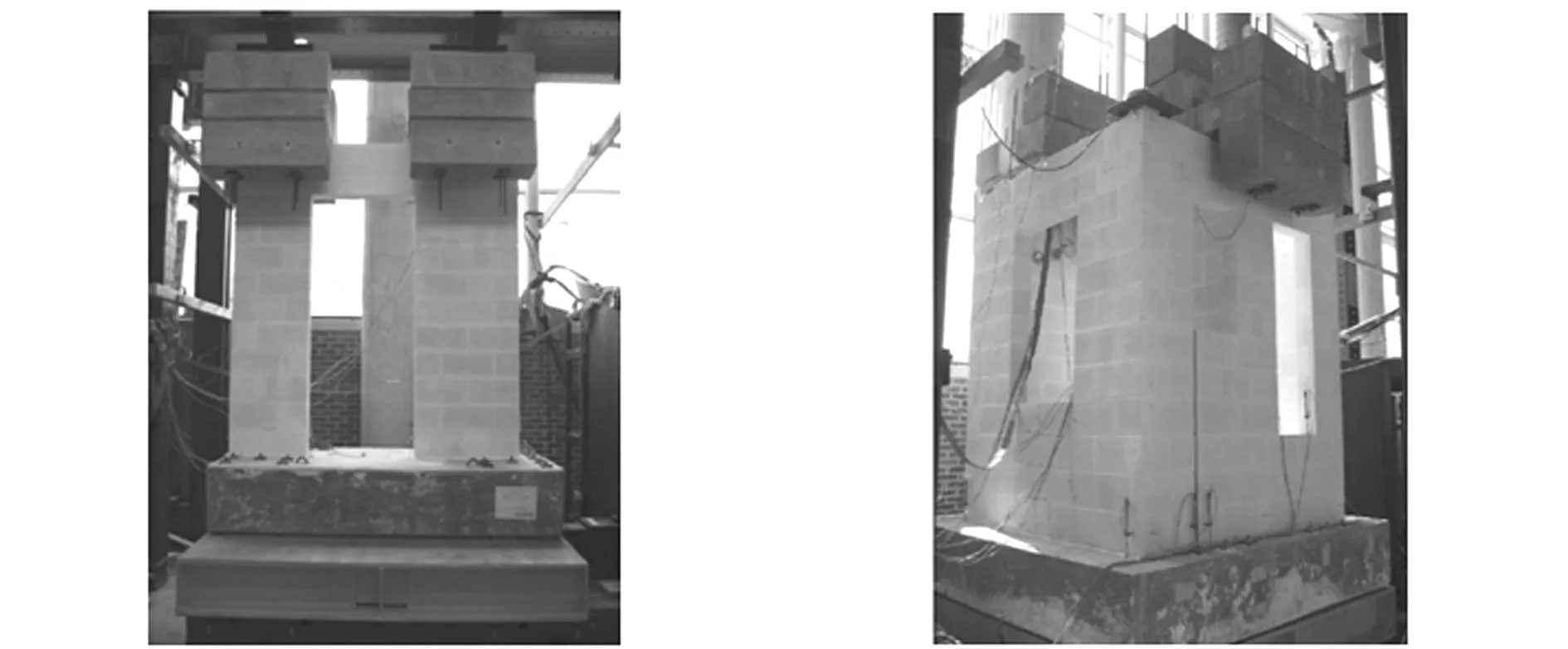

图11 单片单层混凝土砌块剪力墙[27]Fig.11Single-storyin-planeconcretemasonrywall[27]图12 矩形混凝土砌块剪力墙[27]Fig.12Squareconcretemasonrywall[27]
Devereux等[28]对北墨尔本科技学院的艺术音乐馆采用的自复位木结构剪力墙进行了理论分析,这种木结构剪力墙可以绕中轴转动,多片剪力墙之间通过U形钢板进行联接,竖向无粘结钢绞线则提供剪力墙的自复位力,地震中,U形钢板形变消耗地震能量。作者认为,自复位剪力墙抗震效果良好且经济合理,有较大的推广和应用潜力。
国外不少研究者对自复位剪力墙相关理论做了进一步完善。Rahman等[29]设计了两片5层后张自复位剪力墙计算模型,其中一片剪力墙基于力设计方法,另一片则基于位移设计方法,作者通过输入地震动分析评估了两种设计方法的差异。Pennucci[30-31]提出了新的基于位移的底部附加消能器的自复位剪力墙的计算模型和设计方法,并通过试验对比和案例分析验证了计算模型和设计方法的正确性。Aleti等[32]提出了一种简化的分析方法来表征无粘结后张法预制墙系统的单调响应,并通过试验验证了所提出的理论。Erkmen等[33]进行了一系列的对比试验,考察了预应力筋的布置位置,初始预应力的大小,锚固措施及竖向荷载的大小对后张预制剪力墙自复位性能的影响。Twigden等[34]设计了低周反复加载,高速循环加载,自由振动和受迫振动四种试验工况,通过试验考察后张预应力剪力墙的动力特性。
1.2国内对于自复位剪力墙结构的相关研究
相对于国外较为成熟的研究,我国对于自复位剪力墙的研究还处于起步阶段。
陈适才等[35]建立了底部开缝后张拉预应力摇摆剪力墙结构数值模型,并与同类型整体现浇剪力墙进行了对比分析,结果表明:相对于现浇剪力墙结构,底部开缝后张拉预应力摇摆剪力墙结构承载力较低,但变形能力较强,墙体损伤和残余变形较小,且具有较好的自复位能力。
马昕等[36]利用有限元软件ABAQUS建立了自复位剪力墙有限元模型,并在墙底与基础交界处布置软钢阻尼器。研究人员分析了钢阻尼器数量、长度、位置等参数对结构抗震性能的影响,并建立了自复位能力系数、墙体受压损伤指标与阻尼器相关参数的关系曲线。
吴浩等[37]总结了无粘结后张拉预制剪力墙的抗震性能特点,并介绍了此类结构的数值模拟分析方法。作者给出了两种模拟接缝的方法,分别为弥散接缝模型和集中接缝模型。之后,作者基于OpenSees软件对无粘结后张拉预制剪力墙进行了拟静力数值分析,对比试验结果,验证了数值模拟方法的可靠性。
郭彤等[38]提出,可在墙脚处外包钢板防止自复位剪力墙脚部混凝土压溃(图13),并在剪力墙与相邻重力柱连接处增设可拆卸摩擦消能器增加结构耗能能力(图14),研究人员通过试验证实了新型自复位剪力墙良好的抗震性能。


图13 带摩擦消能器的自复位剪力墙结构[38]Fig.13Self-centeringshearwallwithfrictionenergydissipationdevice[38]图14 摩擦消能器连接构造[38]Fig.14Theconnectionstructureoffrictionenergydissipationdevice[38]
2摇摆剪力墙结构
2.1国外对于摇摆剪力墙结构的相关研究
Anderson等[39]通过计算模型研究了地震中剪力墙基础摇摆对于结构的影响(图15)。Gajan 等[40-41]提出,可以通过浅埋剪力墙基础使基础在地震中产生摇摆来提高结构的抗震性能(图16)。研究人员利用离心机试验来研究浅埋基础摇摆剪力墙的抗震性能,结果表明,满足一定尺寸的基础对于土壤的敏感性很小,此外,浅埋基础摇摆剪力墙具有一定的自复位能力和能量耗散能力。Gajan等[42]研究了弯矩剪力比对于浅埋摇摆基础剪力墙的影响,结果表明弯剪比较大的结构具有较好的能量耗散能力并在震后遭受较小的永久位移。


图15 剪力墙和基础弹簧模型[39]Fig.15Modelofshearwallandfoundationspringsystem[39]图16 浅基础支撑框架剪力墙结构[40]Fig.16Shearwallandframestructuresupportedbyshallowfoundations[40]
Ajrab等[43]对一个6层框架摇摆墙建筑进行了基于性能的设计,Jack在结构中附加了外置的预应力钢索及其他消能装置,并进行了非线性时程分析及结构敏感性分析,结果表明,相对固定基础结构而言,摇摆结构层间位移更小,能够满足预定的几乎不发生破坏的性能目标,且地震反应对于钢绞线预应力及墙底宽度并不敏感。
Lu[44]通过试验及分析指出无控摇摆剪力墙会造成梁与墙连接的破坏,从而加速整个结构的破坏,考虑剪力墙中性轴的偏移及结构的三维效应才能更好的预测和改善剪力墙的非弹性性能。
Hitaka等[45]设计了一种新型的摇摆联肢剪力墙结构(图17)。这种结构由钢连梁,钢筋混凝土墙肢及钢管混凝土边柱组成,墙肢底部通过钢管混凝土边柱与基础相连(图18)。与传统结构不同,结构屈曲主要发生在连梁和钢管混凝土短柱上,因此,能有效防止墙肢的破坏。研究人员设计了对应不同破坏模式的四个试件并对其进行了滞回加载试验。之后又利用纤维单元建立了有限元模型对其进行分析,通过试验和有限元分析提出了防止钢管混凝土柱剪切破坏的设计方法。
Wiebe等[46]提出,由于高阶模态的影响,摇摆结构所受的地震力可能大幅增加,可以通过多截面摇摆的方法来减轻高阶模态效应。
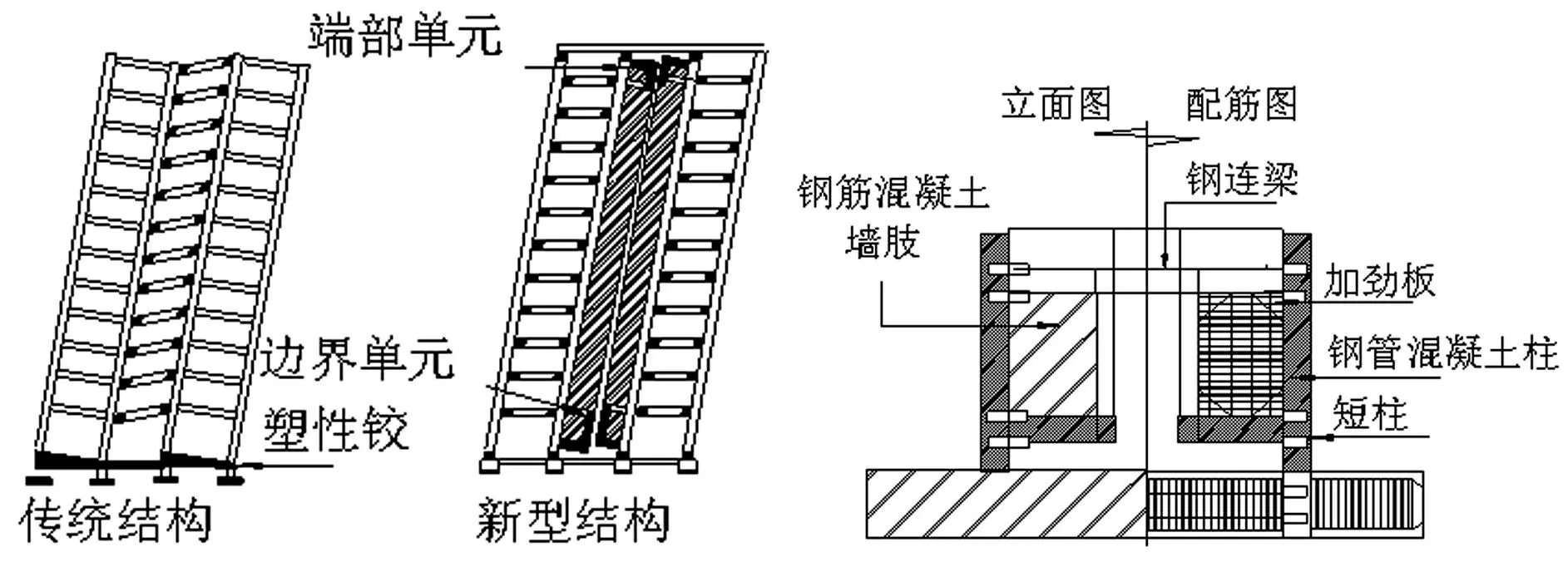

图17 摇摆联肢剪力墙结构[45]Fig.17Rockingofhybridcoupledwalls[45]图18 摇摆联肢剪力墙边界单元[45]Fig.18Boundaryelementofrockinghybridcoupledwalls[44]

图19 加固前后结构平面布置图 [49] Fig.19 Structural plan layout of the existing and retrofitted building [49]
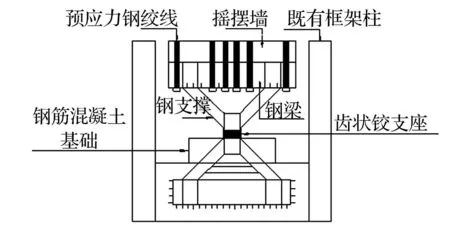
图20 摇摆墙节点构造图 [49] Fig.20 Detailing of the rocking wall [49]
Mulligan等[47]对一个附加半主动控制装置的摇摆墙进行了实时混合试验,结果表明,半主动控制摇摆墙能够有效改善整个结构的能量耗散能力。作者认为,在结构中附加半主动控制摇摆墙是一种较为经济而又有效的加固方法。Marriott等[48]通过一个设计实例,论证了将摇摆墙应用于框架结构的加固改造的可行性。日本的Wada等[49]在对东京工业大学津田校区G3 楼框架结构加固中,采用了摇摆墙加固技术,主要是在原有框架结构的两端和中部加设摇摆剪力墙,并在摇摆剪力墙与原有结构的连接处加设钢阻尼器(图19、图20)。通过剪力墙使结构由局部破坏模式转变为整体破坏模式,并利用剪力墙摇摆时钢阻尼器屈服耗能。研究人员对加固前后的结构进行了非线性时程对比分析,结果表明,采用摇摆系统能够有效的降低结构在不同地震动下的地震响应。
Toranzo等[50-52]提出了将摇摆墙应用于约束砌体结构中的设计方法,并对约束砌体摇摆剪力墙-框架模型进行了振动台试验(图21),以验证摇摆剪力墙设计方法的正确性。由于砌体摇摆剪力墙的固有阻尼较小,研究人员在剪力墙底部附加了外置的钢消能器以增加其耗能能力(图22),振动台试验结果表明,经过合理地设计,约束砌体摇摆剪力墙破坏很小,且能够在大震后通过自重复位。此外,Toranzo认为,适用于约束砌体摇摆剪力墙的设计方法也同样适用混凝土摇摆剪力墙。


图21 约束砌体摇摆剪力墙结构[52]Fig.21Rockingwallsofconfined-masonry[52]图22 钢消能器[51]Fig.22Steelenergydissipatingdampers[52]图23 剪力墙节点构造[53]Fig.23Thenodestructureoftheshearwalls[53]

图24 剪力墙工作原理 [53] Fig.24 Working principle of the shear wall [53]
Loo等[53]提出一了种新型的木结构摇摆剪力墙,剪力墙墙脚采用滑动摩擦耗能器连接代替传统的螺栓固定连接(图23),当地震力大于墙脚的摩擦抗力时,摩擦耗能器启动,结构发生摇摆,通过摩擦消耗地震能量(图24)。研究人员对新型结构进行了数值分析。结果表明,采用滑动摩擦连接能有效避免材料的屈服。适当调整滑动摩擦力能有效提高剪力墙的延性及耗能能力,此外震后结构在自重下具有一定的自复位能力。
2.2国内对于摇摆剪力墙结构的相关研究
国内对于摇摆剪力墙的研究主要停留在理论分析阶段,曲哲等[54]通过数值分析方法,研究了摇摆墙-框架结构的抗震性能和损伤机制控制效果。曲哲等[55]介绍了国际上首个采用摇摆墙体系抗震加固的11层钢骨混凝土框架结构实例,并对加固前后的结构抗震性能进行了对比分析。曹海韵等[56]以一个按现行规范正常设计的 6 层混凝土框架为例,研究了框架摇摆墙结构体系的抗震性能。研究人员利用通用有限元程序Abaqus并结合清华大学开发的PQFiber用户子程序库,建立了框架结构附加摇摆墙前后的弹塑性模型,并进行了推覆分析。曹海韵等[57],针对框架-摇摆墙结构的特殊性能要求设计了连接节点,并进行了试验研究(图25,26)。通过不同加载模式的拟静力试验,验证了连接节点实现摇摆墙转动的可行性,并评价了采用该连接节点对框架-摇摆墙结构的控制效果。


图25 墙底构造[57]Fig.25Constructiondetailsofrockingwallbottom[57]图26 框架-摇摆墙模型[57]Fig.26Modelofframe-rockingwall[57]
裴星洙等[58]在10 层混凝土框架纵向布置 4面摇摆墙体,并与相同尺寸的框架剪力墙体系进行静力弹塑性及动力时程分析,以此考察此体系的抗震性能。
3可更换剪力墙结构

图27 组合支座构造 [63] Fig.27 Detail of the combined bearing [63]
在高层结构剪力墙设计中,通常将剪力墙设计为弯曲型破坏模式,以保证其具有一定的延性,在弯曲型破坏模式下,剪力墙在遭遇超越设防烈度的地震下,底部墙脚的受压区混凝土往往严重破碎,受压钢筋严重屈服。这种破坏难以修复,使用可更换剪力墙脚部构件可以有效解决这一问题。
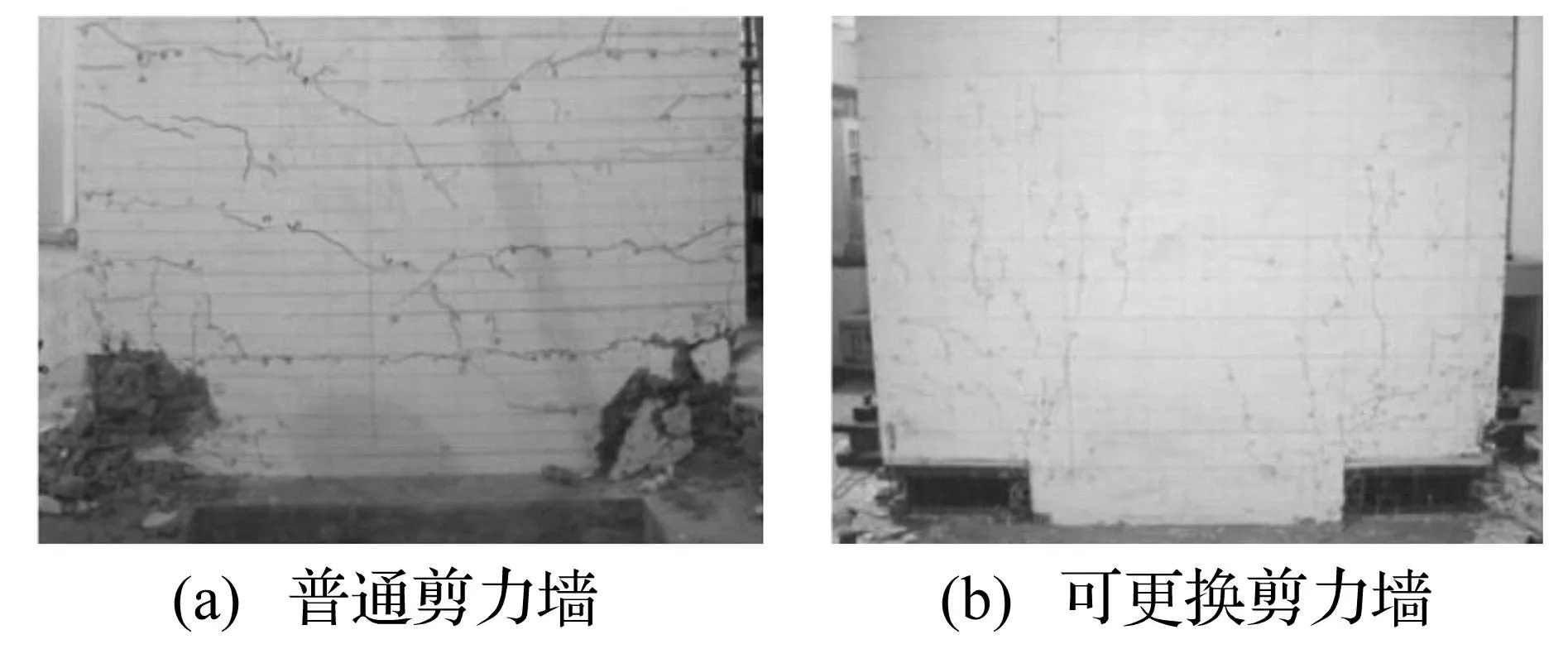
图28 剪力墙破坏模式 [63] Fig.28 Failure pattern of the shear wall [63]

图29 滞回曲线 [63] Fig.29 Hysteresis loops [63]
吕西林等[59-60]设计了一种新型的可更换脚部构件剪力墙,主要设计思想在于用带软钢钢板的拉压橡胶支座来代替剪力墙脚部混凝土,由钢板来承受拉力,橡胶垫承受压力(图27)。它克服了传统橡胶支座抗拉强度低的缺点,支座的抗拉能力可以通过设计计算来调整,支座通过螺栓实现与剪力墙的可拆卸连接,震后通过更换支座即可实现剪力墙的快速修复。研究人员提出了可更换脚部构件剪力墙的设计方法[61],之后对其进行了低周反复试验,并与普通剪力墙试件进行了对比[62-63](图28,29)。试验结果表明,新型可更换剪力墙结构具有更高的延性并能方便的拆卸和更换,但缺点在于地震作用较大时破坏部位会向非更换区转移,且采用更换支座使结构的刚度有明显降低,因此,有待进一步的改良。
4结论
总结国内外已有研究,可以得到以下结论:
(1)剪力墙主要通过浅埋基础,墙片与基础脱开,墙片与基础之间铰接三种形式实现摇摆功能。浅埋基础不需要复杂的构造,但由于岩土性质的复杂和离散性,需要对基础尺寸及地基承载力进行反复分析验证。墙片与基础脱开的方法较为常用,但墙脚与基础接触处容易造成应力集中,可以通过在墙角加设螺旋箍筋或外包钢板的方法防止混凝土压溃。墙片与基础之间铰接可以保证剪力墙几乎不受拉压力影响,可以有效的保护剪力墙,是很好的摇摆构造形式,但连接本身较为复杂,且铰接构造阻碍了预应力钢绞线的连通,因此在自复位剪力墙结构中并不常用。
(2)为了控制摇摆或自复位剪力墙结构在地震作用下的摇摆幅值,通常做法是在剪力墙底部内置软钢棒消能装置,但消能装置破坏后难以更换,采用可拆卸外置消能装置可以有效解决这一问题。
(3)现有的可更换脚部构件剪力墙试件存在抗侧刚度过小的问题,主要原因在于采用刚度较小的橡胶材料作为可更换支座,且连接处存在空隙造成连接刚度大幅减小。虽然在设计上,研究人员对底层非更换段有所补强,但对于补强估计不足。最终造成结构的实际抗侧刚度大大小于传统剪力墙的抗侧刚度,有可能使结构层间位移角不满足规范限值,因此有待进一步研究改良。
(4)国外对于摇摆及自复位剪力墙已有多年的研究历史,包括混凝土,砌体,钢结构,甚至木结构形式的摇摆及自复位剪力墙均有较为深入的探讨,而国内对于这一方面研究依旧处于起步阶段。对于可更换剪力墙,国内外研究较为匮乏,同济大学对这一领域进行了初步探索,然而由于经验不足,依然存在很多不足之处。对于应用于纯剪力墙结构中的同时具备可恢复功能连梁及可更换剪力墙的联肢剪力墙结构,国内外研究依然是一片空白。对于可恢复功能连梁及可更换剪力墙如何协同工作及相互作用机理依然缺乏认识。如今,可恢复功能结构逐渐成为抗震研究的热点,这一领域存在的空白值得研究人员的开拓和补全。
参考文献
[1]FEMA 273 NEHRP guidelines and commentary for seismic rehabilitation of buildings [S]. Washington DC, USA: Federal Emergency Management Agency, 1997.
[2]FEMA 356 Prestandard and commentary for the seismic rehabilitation of buildings[S]. Washington DC, USA: Federal Emergency Management Agency, 2000.
[3]FEMA 445 Next-generation performance-based seismic design guidelines: program plan for new and existing buildings [S]. Washington DC, USA: Federal Emergency Management Agency, 2007.
[4]Report of the seventh joint planning meeting of NEES/E-defense collaborative research on earthquake engineering [R]. PEER 2010 /109. Berkeley: University of California,Berkeley, 2010.
[5]JGJ 3-2010,高层建筑混凝土结构技术规程[S]. 北京:中国建筑工业出版社,2010.
[6]Kurama Y, Pessiki S, Sause R Lu, et al. Analytical modeling andlateral load behavior of unbonded post-tensioned precast concrete Walls [R]. No.EQ-96-02, Department of Civil and Environmental Engineering, Lehigh University, Bethlehem, PA, 191 pp.1996.
[7]Kurama Y C, Sause R, Pessiki S, et al. Seismic design and response evaluation of unbonded post-tensioned precast concrete walls [R]. No.EQ-97-01, Department of Civil and Environmental Engineering, Lehigh University, 184 pp.1997.
[8]Kurama Y C, Sause R, Pessiki S, et al. Lateral load behavior and seismic design of unbonded post-tensioned precast concrete walls [J]. ACI Structural Journal,1999,96(4): 622-633.
[9]Kurama Y C. Seismic design of unbonded post-tensioned precast concrete walls with supplemental viscous damping [J]. ACI Structural Journal, 2000, 97(4): 648-658.
[10]Kurama Y C, Sause R, Pessiki S, et al. Seismic response evaluation of unbonded post-tensioned precast walls [J]. ACI Structural Journal, 2002, 99(5): 641-651.
[11]Holden T, Restrepo J, John B. et al. Seismic performance of precast reinforced and prestressed concrete walls [J]. Journal of Structural Engineering, 2003, 129(3): 286-296.
[12]Perez F J, Pessiki S, Sause R. Experimental and analytical lateral load response of unbonded post tensioned precast concrete walls. Center for Advanced Technology for Large Structural Systems (ATLSS) [R]. No. 04-11, Lehigh Univ, Bethlehem, Pa. 2004.
[13]Perez F J, Sause R, Pessiki S. Analytical and experimental lateral load behavior of unbonded posttensioned precast concrete walls [J] Journal of Structural Engineering, 2007, 133(11):1531-1540.
[14]Restrepo J I, Rahman A. Seismic performance of self-centering structural walls incorporating energy dissipaters [J]. Journal of Structural Engineering, 2007, 133(11): 1560-1570.
[15]Smith B J, Asce S M, Kurama Y C, et al. Design and measured behavior of a hybrid precast concrete wall specimen for seismic regions [J]. Journal of Structural Engineering, 2011, 137(10): 1052-1062.
[16]Smith B J, Kurama Y C, McGinnis M J, et al. Behavior of precast concrete shear walls for seismic regions: comparison of hybrid and emulative specimens[J]. Journal of Structural Engineering, 2013, 139(11): 1917-1927.
[17]Sritharan S, Aaleti S, Thomas D. Seismic analysis and design of precast concrete jointed wall systems [R]. ISU-ERI-Ames Report ERI-07404, 2007.
[18]Marriott D, Pampanin S, Bull D, et al. Dynamic testing of precast, post-tensioned rocking wall systems with alternative dissipating solutions [C]// Bulletin of the New Zealand Society for Earthquake Engineering 2008, 41(2): 90-103.
[19]Panian L, Steyer M, Tipping S. Post-Tensioned concrete walls for seismic resistance [J]. Journal of the Post-tersioning Ingtitute, 2007, 5(1): 7-12.
[20]Panian L, Steyer M, Tipping S. Post-Tensioned shotcrete shearwalls[C]//Concrete International, October 2007, Vol. 29, number 10, American Concrete Institute, Farmington Hills, Michigan.
[21]Stevenson M, Panian L, Korolyk M, et al. Post-tensioned concrete walls and frames for seismic-resistance-a case study of the david brower center [C]// SEAOC. SEAoc 2008 Convention Pro-ceedings. Berkeley: SEAOC, 2008: 1-8.
[22]Clayton P M. Self-centering steel plate shear walls: Development of design procedure and evaluation of seismic performance [D]. Seattle, WA: University. of Washington, Deptment of Civil and Environmental Engineering, 2010.
[23]Winkley T B. Self-centering steel plate shear walls. Large scale experimental investigation [D]. Seattle, WA: University of Washington, Deptment. of Civil and Environmental Engineering, 2011.
[24]Clayton P M, Winkley T B, Berman J W, et al. Experimental investigation of self-centering steel plate shear walls [J]. Journal of Structural Engineering, 2012, 138(7): 952-960.
[25]Dowden D M, Purba R, Bruneau M. Behavior of self-centering steel Plate shear walls and design considerations [J]. Journal of Structural Engineering, 2012, 138(1): 11-21.
[26]Wight G D, Ingham J M, Kowalsky M J. Shake table testing of rectangular post tensioned concrete masonry walls [J]. Aci Structural Journal,2006 1034, 587-595.
[27]Wight G D, Kowalsky M J, Asce M, et al. Shake table testing of posttensioned concrete masonry walls with openings [J]. Journal of structural Engineering, 2007, 133(11): 1551-1559.
[28]Devereux C P, Holden T J, Buchanan A H, et al. NMIT arts & media building-damage mitigation using post-tensioned timber walls [C]// 9th Pacific Conference on Earthquake Engineering, Auckland, New Zealand, 2011.
[29]Rahman A, Sritharan S. An evaluation of force-based design vs. direct displacement-based design of jointed precast post-tensioned wall systems [J]. Earthquake Engineering and Engineering Vibration, 2006, 5(2), 285-296.
[30]Pennucci D. Displacement-based design of precast walls with additional dampers [D]. Italy, European School for Advanced Studies in Reduction of Seismic Risk (ROSE School), University of Pavia, 2008.
[31]Pennucci D, Calvi G M, Sullivan T J. Displacement-based design of precast walls with additional dampers [J]. Journal of Earthquake Engineering,2009,13(S1): 40-65.
[32]Aaleti S, Sritharan S. A simplified analysis method for characterizing unbonded post-tensioned precast wall systems [J]. Engineering Structures, 2009,31(12):2966-2975.
[33]Erkmen B, Schultz A E. Self-centering behavior of unbonded post-tensioned precast concrete shear walls [J]. Journal of Earthquake Engineering, 2009, 13(7): 1047-1064.
[34]Twigden K M, Henry R S, Ma Q T. Dynamic testing of post-tensioned rocking walls [C]// 15th World Conference on Earthquake Engineering. Lisbon, Portugal: 2012.
[35]陈适才,闰维明,李振宝,等.底部开缝预应力剪力墙结构力学性能的有限元分析[J]. 防灾减灾工程学报,2010,30(6): 631-636.
CHEN Shi-cai, YAN Wei-ming, LI Zhen-bao, et al. Finite elemet study on mechanical behavior of the post-tensioned rocking shear walls with bottom Slits [J]. Journal of Disastor Prevention and Mitigation Engineering, 2010, 30(6): 631-636.
[36]马昕,吕西林.软钢阻尼器对自复位剪力墙性能影响研究[J]. 结构工程师,2013, 29(4): 63-69.
MA Xin, LÜ Xi-lin. Effects of the mild steel damper on the self-centering wall performance [J]. Structural Engineers, 2013, 29(4): 63-69.
[37]吴浩,吕西林.无粘结后张拉预制剪力墙抗震性能模拟分析[J].振动与冲击, 2013,32(19): 176-182.
WU Hao, LÜ Xi-lin. Numerical simulation on seismic performance of unbonded post-tensioned precast shear walls [J]. Journal of Vibration and Shock, 2013,32(19): 176-182.
[38]GUO Tong,ZHANG Guo-dong, CHEN Cheng. Experimental study on self-centering concrete wall with distributed friction devices [J]. Journal of Earthquake Engineering, 2013,18(2):214-230.
[39]Anderson D L. Effect of foundation rocking on the seismic response of shear walls [J]. Canadian Journal of Civil Engineering, 2003, 30(2): 360-365.
[40]Gajan S, Kutter B L. Capacity, settlement, and energy dissipation of shallow footings subjected to rocking [J]. Journal of Geotechnical and Geoenvironmental Engineering, 2008, 134(8):1129-1141.
[41]Gajan S. Physical and numerical modeling of nonlinear cyclic load-deformation behavior of shallow foundations supporting rocking shear walls [D]. Davis, Calif, Dept. of Civil and Environmental Engineering, Univ. of California, 2006.
[42]Gajan S, Kutter B L. Effects of moment-to-shear ratio on combined cyclic load-displacement behavior of shallow foundationsfrom centrifuge experiments [J]. Journal of Geotechnical and Geoenvironmental Engineering, 2009, 135(8): 1044-1055.
[43]Ajrab J J, Pekcan G, Mander J B, et al. Rocking wall-frame structures with supplemental tendon systems [J]. Journal of Structural Engineering, 2004, 130(6): 895-903.
[44]Lu Y. Inelastic behaviour of RC wall-frame with a rocking wall and its analysis incorporating 3-D effects [J]. Structural Design of Tall and Special Buildings, 2005, 14(1): 15-35.
[45]Hitaka T, Sakino K. Cyclic tests on a hybrid coupled wall utilizing a rocking mechanism [J]. Earthquake Engineering and Structural Dynamics, 2008, 37 (14): 1657-1676.
[46]Wiebe L, Christopoulos C. Mitigation of higher mode effects in base-rocking systems by using multiple rocking sections [J]. Journal of Earthquake Engineering, 2009,13(S1): 83-108.
[47]Mulligan K J, Chase J G, Mander J B, et al. Hybrid experimental analysis of semi-active rocking wall systems [C]// Proceedings of New Zealand Society of Earthquake Engineering (NZSEE). Napier, New Zealand: 2006.
[48]Marriott D, Pampanin S, Bull D. Improving the seismic performance of existing reinforced concrete buildings using advanced rocking wall solutions [C]// Proceedings of New Zealand Society of Earthquake Engineering (NZSEE). Palmerston North, New Zealand, 2007.
[49]Wada A, Qu Z, Ito H, et al. Seismic retrofit using rocking walls and steel dampers [C]// Proceedings of ATC/SEI Conference on Improving the Seismic Performance of Existing Buildings and Other Structures.San Francisco. CA, USA: Applied Technology Council, 2009.
[50]Toranzo L A, Carr A J, Restrepo J I. Displacement based design of rocking walls incorporating hysteretic energy dissipators [C]// Proc, 7th Int. Seminar on Seismic, Passive Energy Dissipation and Active Control of Vibration of Structures, 2001.
[51]Toranzo L A. The use of rocking walls in confined masonry structures: a performance-based approach [D]. New Zealand: Department of Civil Engineering, University of Canterbury, 2002.
[52]Toranzo L A, Restrepo J I, Mander J B, et al. Shake-table tsts of confined-masonry rocking walls with supplementary hysteretic damping [J]. Journal of Earthquake Engineering, 2009, 13(6): 882-898.
[53]Loo W Y, Quenneville P, Chouw N. A numerical study of the seismic behaviour of timber shear walls with slip-friction connectors [J]. Journal of Structural Engineering, 2012, 34(11): 233-243.
[54]曲哲,叶列平. 摇摆墙-框架体系的抗震损伤机制控制研究[J]. 地震工程与工程振动, 2011, 31(4): 40-50.
QU Zhe, YE Lie-ping. Seismic damage mechanism control of rocking wall-frame system [J]. Journal of Earthquake Engineering and Engineering Vibration, 2011, 31(4): 40-50.
[55]曲哲,和田章,叶列平. 摇摆墙在框架结构抗震加固中的应用[J]. 建筑结构学报,2011, 32(9): 11-19.
QU Zhe, WADA Akira, YE Lie-ping. Seismic retrofit of frame structures using rocking wall system [J]. Journal of Building Structures, 2011, 32(9): 11-19.
[56]曹海韵,潘鹏,叶列平. 基于推覆分析混凝土框架摇摆墙结构抗震性能研究[J]. 振动与冲击,2011,30(11):240-244.
CAO Hai-yun,PAN Peng,YE Lie-ping. Pushover analysis of RC frame rocking wall structure [J]. Journal of Vibration and Shock, 2011, 30(11): 240-244.
[57]曹海韵,潘鹏,吴守君,等. 框架-摇摆墙结构体系中连接节点试验研究[J]. 建筑结构学报,2012,33(12): 38-46.
CAO Hai-yun,PAN Peng,WU Shou-jun, et al. Experimental study of connections of frame-rocking wall system [J]. Journal of Building Structures, 2012, 33(12): 38-46.
[58]裴星洙,王佩. 混凝土框架-摇摆墙体系抗震性能研究[J]. 工程抗震与加固改造,2013,35(2):19-28.
PEI Xing-zhu,WANG Pei. Study on seismic property of RC frame rocking wall [J]. Earthquake Resistant Engineering and Retrofitting, 2013, 35(2): 19-28.
[59]吕西林,周颖,陈云. 一种可更换脚部构件的新型剪力墙[P]. 中国, ZL 2010 2 0107221.6. 2010-12-22.
[60]吕西林,陈云,毛苑君. 结构抗震设计的新概念-可恢复功能结构[J]. 同济大学学报, 2011, 39(7): 941-948.
LÜ Xi-lin CHEN Yun, MAO Yuan-jun. New concept of structural seismic design:earthquake resilient structures [J]. Journal of Tongji University(Natural Science), 2011, 39(7): 941-948.
[61]吕西林,毛苑君. 带有可更换脚部构件剪力墙的设计方法[J]. 结构工程师, 2012, 28(3): 12-17.
LU Xi-lin, MAO Yuan-jun. Design method for RC shear walls with replaceable foot parts [J]. Structural Engineers, 2012, 28(3): 12-17.
[62]LÜ Xi-lin,MAO Yuan-jun,CHEN Yun. Test and analysis on shear walls with replaceable devices under cyclic loading for earthquake resilient structures[C]// 9th CUEE and 4th ACEE Joint Conference. Tokyo: 2012.
[63]LÜ Xi-lin, MAO Yuan-jun, CHEN Yun, et al. New structural system for earthquake resilient design [J]. Journal of Earthquake and Tsunami, 2013, 7(3): 1350013.

